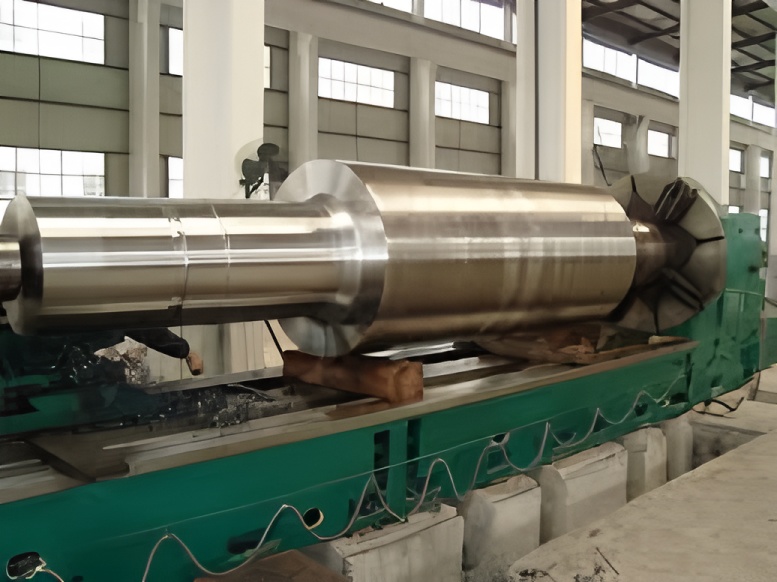Keywords: Bar rolling
Description:
High-speed bar rolling is an advanced steel production process that yields bars with enhanced mechanical properties and superior corrosion resistance. This technology not only improves production efficiency and product quality in the steel industry but also holds broad market potential.
High-speed bar rolling is an advanced method of steel production offering significant advantages over conventional bar rolling, including high efficiency, reduced cost, and improved product quality. Suitable for rolling bars with diameters ranging from 5 mm to 50 mm, this technology employs rapid continuous rolling to produce bars with smooth surfaces, tight dimensional accuracy, high yield rates, and exceptional production efficiency—greatly enhancing mill throughput.
Furthermore, due to the more uniform dimensions achieved through high-speed rolling, the resulting bars exhibit better mechanical properties and higher corrosion resistance, making them ideal for use in automotive, machinery, and electronics applications. Overall, the adoption of high-speed bar rolling technology elevates both the efficiency and quality of steel production, while opening up substantial market opportunities.
Full Short-Stress Twisting-Free High-Speed Rolling
Leading global production facilities, such as the Italian ABSIWNA plant, utilize full short-stress line rolling with alternating vertical and twisting-free stands.
Fully Hot-Charged Direct Rolling Technology
This approach allows for high-volume production with low energy consumption. Exemplified by Japan’s NKK Takamori Plant, fully hot-charged direct rolling—supplemented with corner reheating—is an effective method for reducing costs and enhancing product competitiveness. Several plants in China have also adopted this method. Hot charging of continuously cast billets and regenerative heating furnaces are now widely implemented.
Controlled Rolling and Cooling Super Steel Technology
Producing high-strength (400 MPa) threaded steel bars from low-cost materials is part of China’s “973” research initiative. Trials have been conducted at bar mills in Huaiyang, Nangang, and Sanming with promising results. Market entry of these products is anticipated soon. New projects launched since 2002 have largely incorporated the capability to produce super steel.
Multi-Strand Splitting Technology
Two-strand splitting is already widely used in China, while three-strand splitting has been successfully applied in several mills with expected benefits. Four-strand splitting, introduced by Guangzhou Iron and Steel from Baden, is still undergoing stabilization. As material research advances and high-strength steels claim a larger market share, replacing conventional medium and large specifications with smaller-dimension products has become an inevitable trend. Mastering multi-strand splitting technology is essential for modern bar rolling lines.
Application of Coil Delivery Technology
International mills, especially those with integrated bar-wire lines, produce Ф8–16 mm rebar and deliver it in coiled form. This greatly accommodates diverse customer requirements, particularly for applications in highways, airports, and large bridges. In recent years, specialized coilers for bar and wire lines have been designed and manufactured by equipment makers such as Italy’s POMINI, which can coil bars up to Ф25 mm and larger. These products are either used directly or further processed before delivery to construction sites.
Threaded Steel Deep Processing
With construction markets abroad largely mechanized and due to high labor costs, an increasing number of customers order deeply processed rebar from distribution centers rather than directly from mills. This allows clients to receive processed rebar products daily, aligned with their construction schedules.
Application of Cemented Carbide Roll Rings in Continuous Bar Rolling Lines
To produce smaller sections and reduce manufacturing costs, many plants have begun using cemented carbide roll rings. Germany’s SAAK combo rings are currently the most widely applied. Five domestic manufacturers have also started producing and using such rings. Performance is comparable to imported products, though processing remains challenging.
Automatic Counting Technology
Modern automatic counting uses optical cameras with CCD (charge-coupled device) processing systems to accurately count strands per bundle, though automatic bundle separation online remains a challenge. Billet optimization and multi-size optimization can also help address counting issues. Rack counting before cold shearing ensures consistency in the number of bars per bundle and per batch.
Main Equipment in a Modern Bar Mill and Their Functions
A contemporary bar production line includes the following main equipment: heating furnace, rolling mill, shears, cooling bed, cold shear, and bundling machine.
Heating furnace: Preheats and heats billets to confer sufficient plasticity for rolling.
Rolling mill: Deforms billets plastically between rotating rolls to achieve the required cross-sectional shape and dimensions.
No. 1 and No. 2 shears: Remove head and tail of the rolled product or shear in emergency situations.
No. 3 shear: Performs hot double-length and optimized shearing of finished product.
Cooling bed: Cools and straightens rolled products to ensure flatness.
Cold shear: Cuts products to length to facilitate downstream processing and transport.
Bundling machine: Bundles finished products as required.
What is Endless Rolling?
Endless rolling involves welding the head and tail of consecutive billets to enable continuous feeding and rolling. This method allows for theoretically infinite rolling length within a roll change cycle.
What is Endless Welded Rolling?
Endless welded rolling refers specifically to the practice of welding fixed-length billets (based on furnace size and product type) using a billet welder before roughing. The weld is smoothed before entering the roughing mill, enabling truly continuous rolling.
Advantages of Endless Welding Rolling
This method increases output, yield, and mill utilization, reduces costs, simplifies production management, and offers strong adaptability.
Increased production: Eliminates billet intervals, increases productive time, and improves output. Scrap—typically generated at the bar head—is greatly reduced, as are head and tail crop losses.
Higher yield and operational rate: Only the first head and last tail require cropping in a shift. Cooling bed optimization for length is unnecessary; the shear only cuts double lengths, avoiding short bars.


